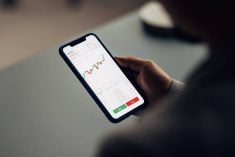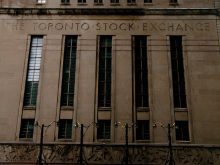Bonds have long been scorned by investors lured by the seemingly higher returns of stocks. To be honest, on a historical basis, comparing returns over decades, stocks do pay more than bonds — but those stocks pull off this feat with much more pain and suffering. With the higher reward goes the higher risk.
For starters, we need to clarify the difference between a bond and a stock. A bond is a solemn promise to pay interest for a defined period to a specified maturity date, and then to return the issue price of the bond. If you buy a $1,000 bond for $800, it’s a contract and if the borrower, which is the bond issuer, does not pay interest on time in the amount promised, bond holders can and almost always do sue for payment. They will get paid or get to own the company. That does not work for government bonds. Historically, the big issuers of government debt, including Canada, the U.S., major European countries and Japan, do not default. Note that countries have armies and are averse to getting seized.
Corporations that don’t pay, however, get pushed into bankruptcy by injured bondholders. Bond ratings, issued by agencies such as Standard & Poor’s, show the odds of payment or default, from AAA or AA+, which major governments and their agencies get, down to B+, which still is not bad, to C, which is not good, down to D, which means insolvent or just about. Bondholders can push defaulting companies into bankruptcy, which is why very few bond issuing companies fail to pay on time and countries which default can find their national airlines’ planes seized. It is very rare, and in those cases it can take years — decades, in the case of Argentina, a serial defaulter — but holdouts do get their cash.
Read Also

Gentle treatments for pain in the neck
Heading toward year-end, people unknowingly tense up against the cold and busyness, causing neck pain that can often be treated with appropriate support and gentle mobility, athletic therapist Kathlyn Hossack says.
In exchange for the greater security bonds provide in comparison to stocks, investment-grade bonds pay less on an historical basis than stocks. For example, in 2023, the U.S. Standard & Poor’s (S&P) 500 stock index rose 26.06 per cent, while U.S. corporate bonds with respectable Baa ratings returned a comparatively crummy 8.74 per cent. The stock index return was almost three times the bond return. What’s more, Canadian stock dividends get the dividend tax credit while bond interest is fully taxed. Stocks seem to win.
Not quite, though. In 1974, when the S&P 500 stock index dropped a breathtaking 25.9 per cent, Baa-rated corporate bonds lost just 4.38 per cent. In the long run, stock returns will certainly bash bond returns, but that long run can be 48- to 60-month stocks cycles. That means waiting as much as five years for stocks to recover. Bond cycles can be 30 years. That’s a long time for a person retiring in need of fairly certain income in years when he or she no longer earns income. The point is, bonds have their down years and long cycles, but most years bond indices drop only low single digits. Of course, every rule has an exception — at the low end of investment grade issues, Baa corporate bonds lost 17.83 per cent in 2022, though the S&P 500 stock average lost 18.04 per cent in the same year. That’s all in U.S. dollars. Even in a bad year, bonds lose less than stocks. And that is critical for retirees.
Rate expectations
If you do want to add bonds to your portfolio or add more bonds to what you already have, interest rate expectations are critical. Market observers are predicting a tough time for stocks in 2025. But in tough times, central banks such as the U.S. Federal Reserve and the Bank of Canada drop rates. It has not happened much at the time of writing, but a rate decline, even if distant, is a sure thing. In other words, we know it will happen, but not when or by how much.
As interest rates fall, existing bonds with known rates superior to rates being cut will be more appealing and should rise in price. Government bonds issued by the government of Canada, the provinces and big companies like the banks, CN, CPKC et cetera should rise in price to provide some compensation if and when their stocks decline. How much compensation depends on your own allocation to stocks and bonds. A financial planner can do the balancing work.
Picking corporate and government bonds and trading them in a cost-efficient fashion is not for small investors. Bonds are priced on buy-sell spreads and any trade less than $1 million for government issues and $5 million for corporates is likely to have a buy-sell spread big enough to scrape a few per cent off the return. That could be most or all of your gain.
The way to avoid these hatchet jobs is to invest in bond exchange traded funds (ETFs). Chartered banks, iShares, Vanguard and other investment fund managers offer dozens of varieties of U.S., Canadian and other government bonds and such things as international bond mixes. The fees for these funds are usually 1/10 of one per cent of portfolio value per year. There is some variation, so you have to check the issuers’ tables. Managed bond funds have much higher fees and trading charges than plain vanilla ETFs Those managed bond fund fees are often so high that they scrape the cash flow gains down to little or nothing. Always compare what ETFs charge to what managers charge for managing portfolios. On government bonds, ETFs always win. On some corporate bonds, junk and foreign bonds, managers can beat indexes, but if you want that kind of risk, you can just add stocks with, typically, rising dividends. Don’t accept risk without payment for it. For a portfolio, bonds should reduce risk. Taking on additional risk for interest rate gains or even defaults makes no sense.
Note that bonds have fixed maturity dates when you get back the face value of the bond. Stocks have no maturity dates, though with takeovers and buybacks, a return of some cash is possible. If you bought for less than the share price at these redemptions, you get a profit. If you paid more, you lose.
In the long run, which tends to mean a decade or more, stock returns will beat bond returns. There may be more pain, but patience can help. With the steady annual or semi-annual coupons from bonds, you get paid on time. Stocks dividends often rise; bond coupons, except on rate reset bonds issued by banks, do not.
I don’t think there is a one-size-fits-all rule for buying bonds. Managed bond funds seldom beat big index funds, so by all means browse Vanguard, chartered bank bond ETFs and iShares.
U.S.-based PIMCO (short for Pacific Management Corp.) is a huge and expert bond manager. Ditto RBC and other Canadian chartered banks Look for funds with management expense and related trading costs below 10 to 15 basis points. It’s all published data. You can buy most of these funds online and/or through online discount brokers. Remember that in comparison to stocks dividends, which can rise as noted, or fall, which is rare, bond dividends other than rate resetters are fixed. Resetters often apply a revised five-year interest rate plus a bonus for corporate risk. But if rates are falling, resetters can cut bond payments and prices. If you want to invest in resetters, get advice.
Don’t ignore interest rate risk and be prepared to hold bonds to maturity. If you invest at less than the issue or redemption price, you’ll get additional profit at redemption or as redemption approaches. And most of all, discuss any investment plan with your financial advisor, accountant or even lawyer if an estate plan is involved.















